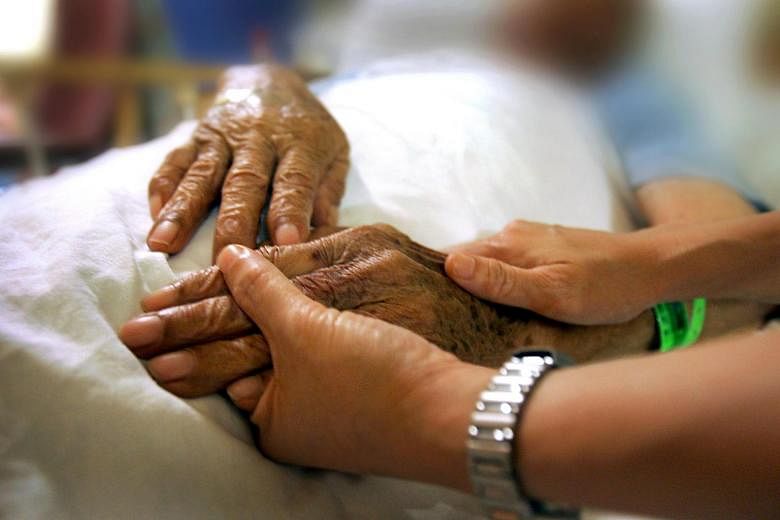Thirty years ago, when hospice care first began in Singapore, nearly every patient referred had cancer.
These days, it is a different story.
While cancer patients still form the bulk of those referred to palliative care, a growing number do not have the disease.
Instead, these patients have chronic health problems that they have been grappling with for years.
These can include organ failure - typically of the heart, lungs or kidneys - or even dementia.
Hospices say care has had to adapt to this growing demographic and its unique needs.
For example, cancer patients often experience a slow decline over a relatively short period, said Dr Chong Poh Heng, the medical director at HCA Hospice Care.
However, the disease trajectory for other types of patients is typically longer and less predictable.
As a result, care often focuses on improving quality of life and helping family members cope in the long haul, as patients are sometimes cared for at home.
In some cases, patients' conditions even stabilise and they go on to lead relatively normal lives.
"As a general rule, patients with cancer live about three months after being referred to us. We know that in these three months, we have to work very hard," Dr Chong said.
"But for the ones without cancer, they dip down ever so slowly," he added. "It is about helping them to live with a good quality of life, ensuring that they can come out of the house, that they have some semblance of a social life."
He estimates that two in 10 patients under HCA's care do not have cancer.
While much of cancer care is focused on alleviating pain, palliative care for other conditions also involves dealing with issues such as breathlessness or confusion.
For example, those with advanced dementia may lose their ability to communicate, said Adjunct Associate Professor Joyce Simard at Western Sydney University's nursing school in Australia.
But activities can be designed so that they remain engaged even in their final days, she said.
"We can't cure dementia and medication is not particularly helpful, but we can offer meaningful activities that help people live - not simply exist - with memory loss."
The number of inpatient palliative care beds has nearly doubled since 2011, while the number of home palliative care places has gone up by nearly half.
Dr Angel Lee, who chairs the Singapore Hospice Council, said the number of inpatient consultations for palliative care has also increased by 8.2 per cent over the past three years.
"(This demonstrates) the value placed by other clinicians on the palliative care team's input," she said.
However, the Singapore Medical Council's annual report states that there were only 28 palliative care physicians registered last year, out of more than 5,000 specialists.
Although this is double the number that was on the register four years ago, experts say it is not enough.
Assisi Hospice chief executive Choo Shiu Ling said: "There are challenges in getting healthcare professionals interested and committed to a career in palliative care.
"This is especially so for nursing, medical social workers and allied health workers."
HCA Hospice's Dr Chong added: "This little group of us cannot look after all the people who are dying in Singapore, and we need to engage the society at large."
This includes getting general practitioners and nursing graduates to do attachments with hospices and take knowledge back to their respective workplaces.
Dr Ong Wah Ying, the medical director at Dover Park Hospice, said: "People think of the hospice as something that is very dark, gloomy and sad.
"But it is not about dying but living life to the fullest."


